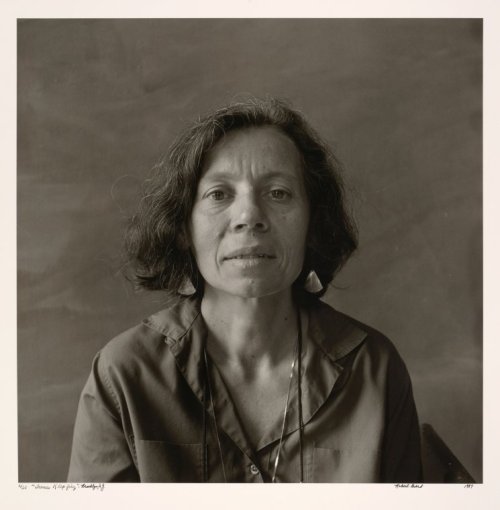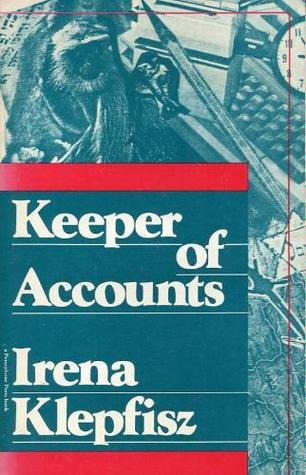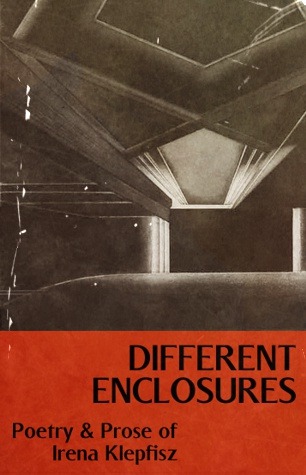Top: Irena Klepfisz (Brooklyn, 1987). NYPL Digital Collections.Below: The covers of Periods of Stres
Top: Irena Klepfisz (Brooklyn, 1987). NYPL Digital Collections.Below: The covers of Periods of Stress (1975), Keeper of Accounts (1982), Different Enclosures (1985), A Few Words in the Mother Tongue (1990), and Dreams of an Insomniac (1990). Klepfisz also co-edited The Tribe of Dina: A Jewish Women’s Anthology (1986) and A Jewish Woman’s Call for Peace: A Handbook for Jewish Women on the Israeli/Palestinian Conflict (1990), was a founding editor of Conditions magazine and of Out & Out Books press, and was a contributor to numerous lesbian/feminist and Jewish anthologies and magazines, including InVersions (Warland, 1991), An Intimate Wilderness (Barrington, 1991), Garden Variety Dykes (Reti, 1994), Bridges, Sinister Wisdom, and IKON. She was born in Warsaw, Poland, in 1941, and is the daughter of Rose Klepfisz, the esteemed Jewish history archivist.They Did Not Build Wings for Themfrom Different Enclosures.they did not build wings for themthe unmarried aunts; instead theycrammed them into old maids’ roomsor placed them as nannies withthe younger children: mostly theyare in the kitchen, but sometimeswere permitted to dine with the familyfor which they were grateful andsmiled graciously as the food was passed.they would eat slowly never fillingtheir plates and their hearts wouldsink at the evening’s end when it wastime to retreat into an upstairs corner.but there were some who did not smilewho never wished to be grafted onthe bursting houses. these few remainedindifferent to the family gatheringspreferring the aloneness of their small roomswhich they decorated with odd objectsfound on long walks. they collectedbird feathers and skulls unafraid to cleanthem to whiteness; stones which resembledhumped bears or the more common tiger andwolf; dried leaves whose brilliant colorsnever faded; pieces of wood still coveredwith fresh moss and earth which retainedtheir moisture and continued flourishing.these they placed by their dresser mirrorin arrangements reminiscent of secret ritesor hung over delicate watercolors of unrulytrees whose branches were about to snapwith the wind.it happened sometimes, that among theseone would venture ever further. periodicallywould be heard vague tales of a womanwithdrawn and inaccessible suddenly disappearingone autumn night leaving her room bareof herself. women gossiped about a man.but eventually word would come backshe had moved north to the ocean and livedalone. she was still collecting.but now her house was filled with craband lobster shells; discolored clawswhich looked like grinning south americanparrots trapped in fish nets decoratedthe walls; skulls of unidentifiablecreatures were arranged in geometric patternsand soft reeds in tall green bottleslined the window sills. one roomin the back with totally bare wallswas a workshop. here she sorted coloredshells and pasted them on wooden boardsin the shape of common flowers. these she soldwithout sentiment.such a one might also disappear inland.rumor would claim she had traveled inmen’s clothing. two years later it wouldbe reported she had settled in the woodson some cleared land. she ran a small farmmainly for supplying herself with foodand wore strangely patched dresses and shawlsof oddly matched materials. but alonenesswas her real distinction. the house was neatand the pantry full. seascapes and pastoralscenes hung on the walls. the garden waswell kept and the flower beds clearly definedby color: red yellow blue. in the woodsfive miles from the house she had an orchardhere she secretly grafted and crossed varietiescreating singular fruit of shades and scentsnever thought possible. her experiments rarelyfailed and each spring she waited eagerly to seewhat new forms would hang from the trees.here the world was a passionate place and shewould visit it at night baring her breaststo the moon. -- source link
Tumblr Blog : songsforgorgons.tumblr.com
#irena klepfisz#lesbian poets#jewish poets#poetry#portraits





